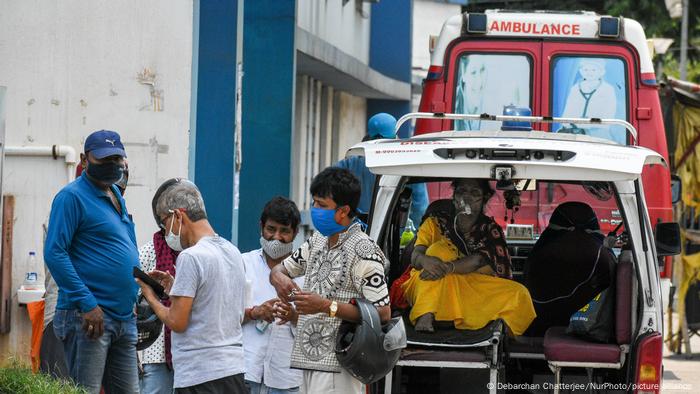India: Rich Flee on Private Jets As COVID-19 Cases Hits Global Record
REMINDS ME OF
It’s possible that I shall make an ass of myself. But in that case one can always get out of it with a little dialectic. I have, of course, so worded my proposition as to be right either way (K.Marx, Letter to F.Engels on the Indian Mutiny)

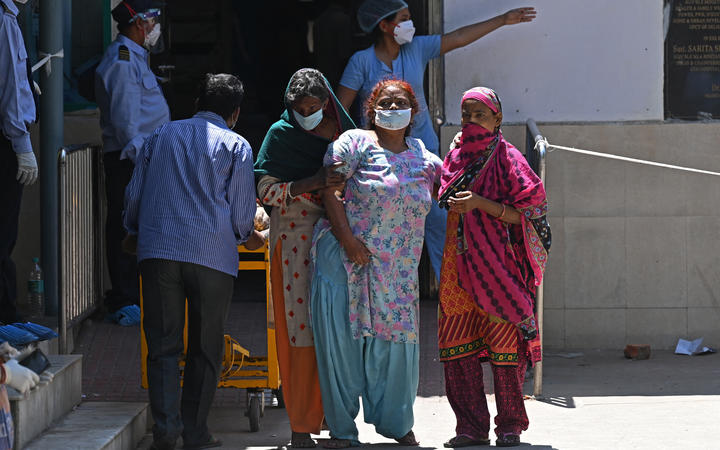





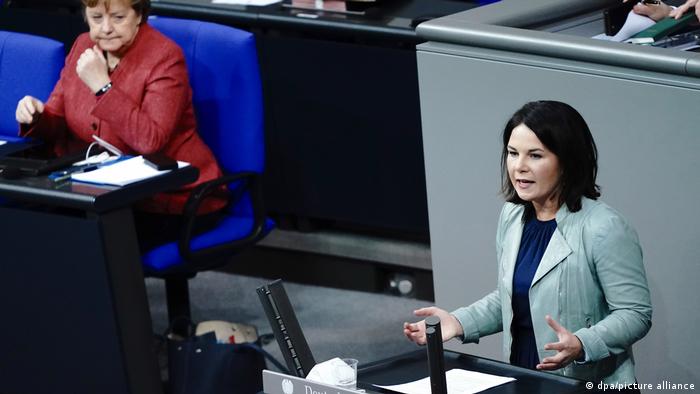
Germany's Green party is more popular than German Chancellor Angela Merkel's CDU/CSU bloc, according to a new opinion poll published on Sunday.
The Greens polled at 28%, up 6 percentage points, according to the Kantar research group's Sunday trend poll carried out on behalf of tabloid Bild am Sonntag.
The newspaper reported that this was the Green's highest-ever poll rating in the history of the Sunday trend polls.
Watch video00:33 Baerbock: We must make changes to create a fair country
Merkel's conservative Christian Democrats (CDU) and their Bavarian sister party the Christian Social Union (CSU) fell two percentage points to 27%.
The Social Democrats (SPD), who share power in a coalition government with the conservatives, also lost two points, slipping to 13%. This was their lowest result since August 2019.
The socialist Left party polled at 7%, and the far-right, populist Alternative for Germany (AfD) recorded 10% — both down one point.
The pro-business Free Democrats (FDP) remained at 9%.
Kantar surveyed 1,225 people for the poll between April 15 and 21.
WHO COULD SUCCEED ANGELA MERKEL AS GERMAN CHANCELLOR?Armin LaschetCDU chairman Armin Laschet, a staunch supporter of Angela Merkel, heads Germany's most populous state. Conservatives routinely underestimated the jovial 60-year-old, famous for his belief in integration and compromise. But recently, his liberal non-interventionist instincts have led to him eating his words more than once during the coronavirus crisis. PHOTOS 123
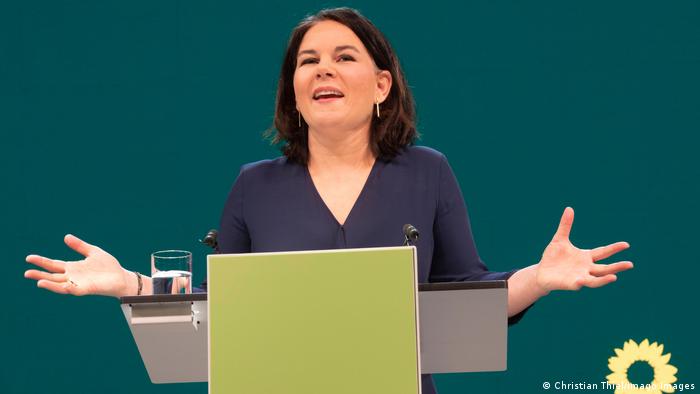
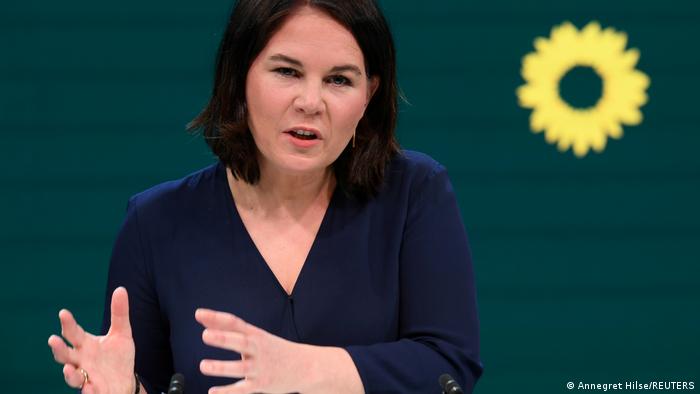



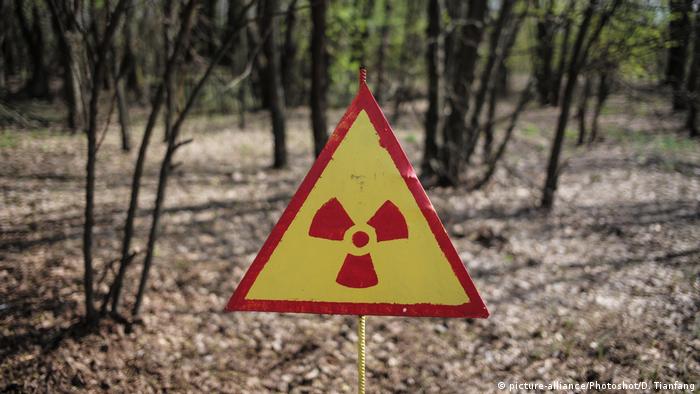

Animals living in the exclusion zone may have a lower life expectancy
"The influence of ionizing radiation may cause some restructuring in the body, but mostly it simply reduces an organism's viability," he explained, giving the example of high embryo fatalities in rodents due to genomic defects that prevented the organism from functioning. Those animals that survive the womb sometimes have disabilities that prevent them from staying alive in the wild. Vishnevsky and his colleagues have conducted research into thousands of animals in the exclusion zone, but have not found any unusual morphological alterations.
"Why? Because we were always dealing with animals that had survived and had won the fight for survival," he said. He added that it was difficult to compare these animals with creatures that scientists had deliberately exposed to radiation in laboratories.
Has nature reclaimed the site of the disaster?
Reports entitled "Life Flourishing Around Chernobyl" and photo series suggesting that the exclusion zone has become a "natural paradise" might give the impression that nature has recovered from the nuclear disaster. But Brown, who has been researching Chernobyl for 25 years, is adamant that this is "not true."
"That's a very seductive idea, that human messed up nature and all they have to do is step away and nature rewrites itself," she said. In reality, however, biologists say that there are fewer species of insects, birds and mammals than before the disaster. The fact that some endangered species can be found in the exclusion zone is not evidence of the area's health and vitality.
Watch video 03:45 Nature is taking back Chernobyl
On the contrary: there has been a significant increase in the mortality rate and a lowered life expectancy in the animal population, with more tumors and immune defects, disorders of the blood and circulatory system and early ageing.
Scientists have attributed the apparent natural diversity to species migration and the vastness of the area. "The exclusion zone comprises 2,600 square kilometers [about 1,000 square miles]. And to the north are another 2,000 square kilometers to the north is Belarus' exclusion zone," said Vishnevsky. "There are also areas to the east and west where the human population density is extremely low. We have a huge potential for preserving local wild fauna." That includes lynxes, bears and wolves which need a great deal of space.
But even 35 years after the disaster the land is still contaminated by radiation, a third of it by transuranium elements with a half-life of more than 24,000 years.
Is it safe for tourists to visit Chernobyl?
The exclusion zone was already a magnet for disaster tourists, but in 2019 annual numbers doubled to 124,000 after the success of the HBO miniseries Chernobyl. The State Agency of Ukraine on Exclusion Zone Management has set up a number of routes so tourists can visit the region by land, water or air. It has also drawn up a number of regulations to protect visitors, stipulating that people must be covered from head to toe. They shouldn't eat any food or drink outside, and they should always follow official paths. It's estimated that the radiation dose received over a one-day visit does not exceed 0.1 millisievert (mSv) — roughly the same dose that a passenger would be exposed to on a long-distance flight from Germany to Japan, according to Germany's Federal Office for Radiation Protection.
Some medical uses might expose a patient to much higher doses. Sven Dokter, the spokesman for the German nuclear safety organization Global Research for Safety (GRS), said that the dose of an effective pelvic X-ray ranged from 0.3 to 0.7 mSv, while a CT scan of the chest ranged from 4 to 7 mSv.
Watch video 05:23 Chernobyl as a tourist attraction
Dokter said a visit to the exclusion zone would not cause any undue harm if visitors paid attention to the rules and took an official tour.
"We're a long way off from the doses needed for a warning against such visits to be issued," he told DW. "On average in Germany a person receives a radiation dose of over 4 mSv per year. Half of this is from the natural radiation that we're always exposed to and the other half comes from standard medical procedures and flights."
The IAEA also has no qualms: "One may certainly visit the Chernobyl area, including even the exclusion zone, which is a 30-kilometer radius surrounding the plant, all of whose reactors are now closed. Although some of the radioactive isotopes released into the atmosphere still linger (such as Strontium-90 and Caesium-137), they are at tolerable exposure levels for limited periods of time," said the organization's website.
Are there people living in the area?
Today, Pripyat, the closed city built to serve the nuclear plant and house its employees, is often described as a ghost town, as is the nearby city of Chernobyl.
However, neither has been entirely empty since 1986. Thousands of people, usually men, have stayed there, often working two-week shifts and ensuring that the crucial infrastructure in both cities continues to function. After the explosion in reactor No. 4, reactors 1, 2 and 3 continued to operate, closing down only in 1991, 1996 and 2000. Special units of the Ukrainian Interior Ministry police the zone. There are also stores and at least two hotels in Chernobyl, which are mainly for business visitors.
There are also a number of unofficial inhabitants, including people who used to live in the area and have chosen to return. They have settled in villages that were evacuated after the disaster. The exact number of people is unknown: when DW asked the State Agency of Ukraine on Exclusion Zone Management how many people lived in Chernobyl, the official answer was "nobody."
In 2016, about 180 people were thought to be living in the entire exclusion zone. Because they tended to be older, this number may well have fallen. Even though these locals are officially only tolerated, the state does support them in their everyday lives. Their pensions are delivered once a month, and every two to three months they are supplied with food by a mobile store.
This article has been translated from German.
CHERNOBYL: THE PEOPLE WHO'VE STAYEDThe contagious optimism of Baba GaniaBaba Gania (left) is 86 years old. She survived her husband who died a decade ago. For the past 25 years, Gania has taken care of her mentally disabled sister Sonya (right). "I am not afraid of radiation. I boil the mushrooms till all the radiation is gone!" she says proudly. Photographer Alina Rudya visited her several times over the past years: "She is the warmest and kindest person I know." PHOTOS 12345678910


